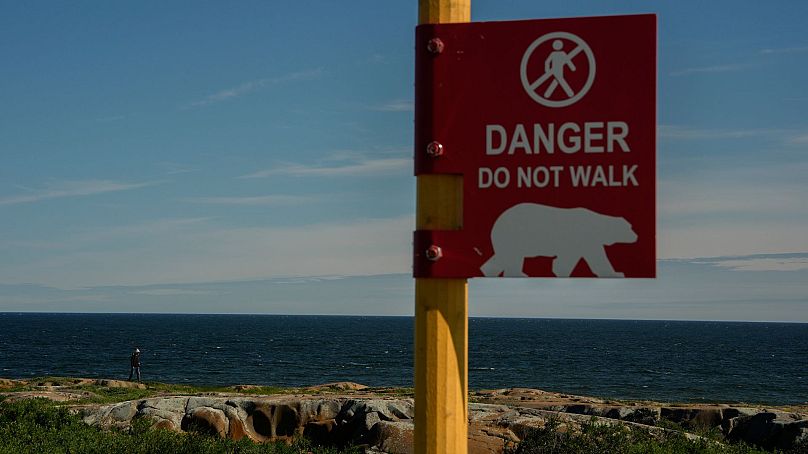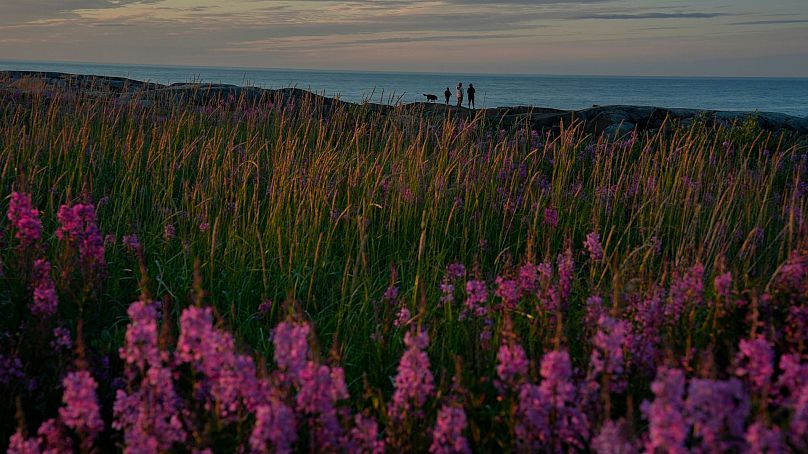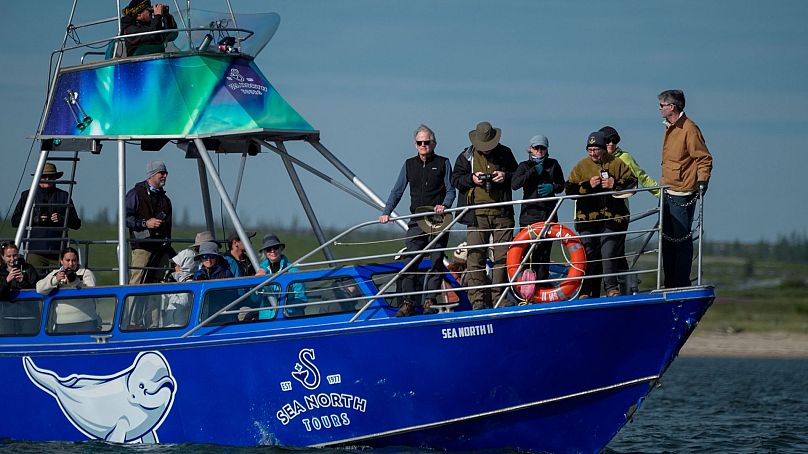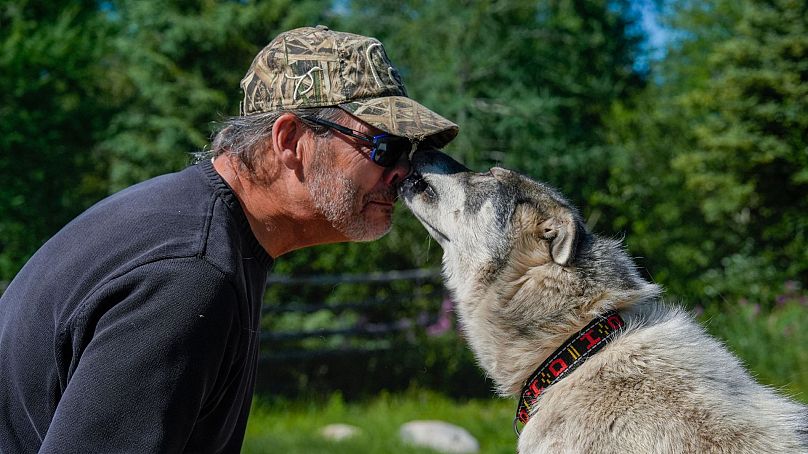This remote town relies on polar bear tourism - but it’s having to adapt as the climate heats up.
Tourists hoping to catch a glimpse of polar bears flock to Churchill on the shore of Hudson Bay, Canada.
But its signature animals are dwindling in the face of warming weather. Even the ground is shifting.
In a bid to revitalise its port and railway, the remote town, where tundra meets forest, turned to tourism after the closure of its military base.
As climate change has edged into the picture, leaders have begun designing more flexible buildings and seeking to entice more varied visitors if, as scientists fear, shrinking sea ice crashes the plentiful polar bear population.
Residents, government officials and experts say the town is a model for coping with dramatic shifts and attribute it to the rural mindset that focuses on fixing, not whining.
How did Churchill become the 'polar bear capital of the world'?
Churchill sits about 1,700 kilometres north of Winnipeg. The town had thousands of people before the military base and a rocket research launch site shut down decades ago. Those sites fell into decay, and what had been a bustling port closed. Train services stopped for more than a year as weather shattered poorly maintained tracks.
As the town dwindled, bears began coming to town more often, no longer frightened away by noise from the base and rocket launches, and made desperate as climate change shrank the Hudson Bay ice they depend on as a base for hunting.
A local mechanic built a fat-tired, souped-up recreational vehicle to see bears safely. Photos and documentaries attracted tourists, who spend $5,000 (€4,525) a visit on average and millions of dollars overall.
Churchill now bills itself as the polar bear capital of the world, and though it has no stoplights, it features upscale restaurants and plenty of independent hotels.
Climate change is forcing Churchill to adapt
If that comes to an end, Churchill hopes to be ready.
The town is promoting tourism for beluga whales, although those too may be harmed as the entire Hudson Bay ecosystem, including the food the belugas eat, shifts to one usually seen further south.
It's also highlighting visitors' prospects for seeing the northern lights, spotting birds they can't see at home, and even trying dogsledding.
“In time you're going to lose bear season. And we know that. Anyway, it's just a matter of we're going to have to adapt to that change,” says Mike Spence, mayor since 1995. “You can't stew over it. That's not going to get you any points."
Spence grew up with the military installation “and all of a sudden it closes and then all of a sudden you get the tourists, the abundance of wildlife and the aurora. That's where you take advantage of it. You sort of tweak things and you improve life.”
The shuttered port and the damaged train tracks? The town took them over and got both running again. Ground sinking because the weather is getting rainier and permafrost is thawing? New buildings like the ones at Polar Bears International, a nonprofit conservation organisation with headquarters in the city, have metal jacks that can be adjusted when a corner sinks nearly half a foot in five years.
'A standout example of a city that is planning ahead'
Lauren Sorkin, executive director of the Resilient Cities Network, says every city should have a plan to adapt to climate change's effect on economy and tourism.
“Churchill is a standout example of a city that is planning ahead to protect communities and preserve our natural environment and its biodiversity," she says.
Spence, who is Cree, grew up with no electricity or running water in 'the flats' on the outskirts of town, which was run by a white minority. Churchill is about two-thirds Indigenous with Cree, Metis, Inuit and Dene. Spence recalls his father saying that if only he spoke better English he could tell officials how to fix the town.
“I think I'm doing that for him,” Spence says. “You don't just say ‘I got a problem.' You go there with the fix.”
Climate change-induced rain hits Churchill's transport systems
You can't drive to Churchill. Food, people, cargo, everything gets there by rail, boats or plane. Rail is the cheapest, and most residents travel by taking the overnight train to Thompson, then driving south from there.
Until a few years ago the train tracks, which had been leased to a private company, were not being maintained properly and the wet, stormy spring of 2017 created 22 washouts of the line between Churchill and points south, Spence says. The company couldn't afford to fix them.
Big storms in Churchill are as much as 30 per cent rainier than 80 years ago because of human-caused climate change, says Cornell University climate scientist Angie Pendergrass.
“Service stopped dead” for 18 months, Spence recalls. “It was just devastating.”
Meanwhile, there weren't enough goods coming into the ageing port. Spence says that shipping hub and rail lines needed to operate as an integrated system, and not be run by an absentee US owner, so the town negotiated with the federal and provincial governments for local control and federal financial help.
In 2018, Arctic Gateway Group, a partnership of 41 First Nations and northern communities, took ownership of the port and rail line. Rail service returned on Halloween that year. Manitoba officials said that in the last two years 610 kilometres of track have been upgraded and 10 bridges repaired. Shipping in the port has more than tripled since 2021, including the return of its first cruise ship in decade, they said.
Earlier this year, officials announced another $60 million (€54.3m) in port and rail funding.
How Indigenous residents are forging a brighter future for Churchill
Local ownership is key in Churchill, says former Chamber of Commerce president Dave Daley, who left town in the 1980s but returned after five years because he and his wife missed it. Big hotel chains poked around once and said they could fix up the town's infrastructure and build something big.
“We all stood and said ‘no',” says Daley. “We're a tight-knit group. We have our different opinions and everything else but we know how we want Churchill to be.”
As Churchill evolves, its forgotten past has surfaced at times as tourists ask about residents and their history, says longtime resident Georgina Berg, who like Spence lived on the flats as a child. That past includes “not-so-happy stories” about forced relocation, missing women, poverty, subsistence hunting, being ignored, deaths and abuse, says Berg, who is Cree.
Daley, a dogsled racer and president of Indigenous Tourism Manitoba, tells of how the Metis people were especially ignored, abused and punished, yet he ends the history lesson with an abrupt shift.
“We can’t change five minutes ago, but we can change five minutes from now,” Daley says. “So that’s what I teach my kids. You know it’s nice to know the history and all the atrocities and everything that happened, but if we’re going to get better from that we have to look forward and look five minutes from now and what we can do to change that.”
Meanwhile, Daley and Spence notice the changes in the weather - not only warmer, but they're getting thunder here, something once unimaginable. The Arctic is warming four times faster than the rest of the world. While Churchill isn't quite as bad off because it's south of the Arctic Circle, “it's something we take seriously”, Spence says.
“It's a matter of finding the right blend in how you adapt to climate change,” Spence says. “And work with it.”















